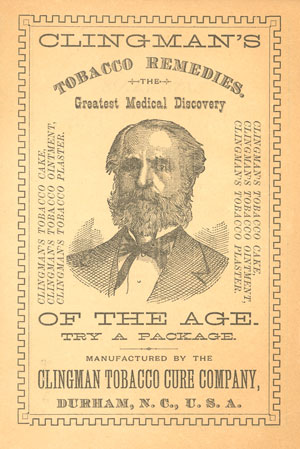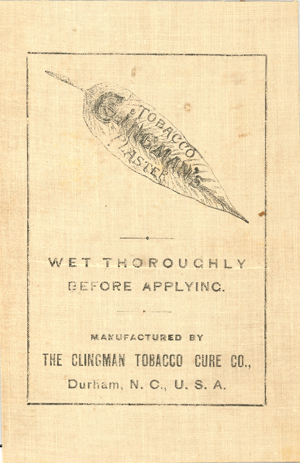Whenever I was stung by a bee as a child, I remember my dad breaking open a cigarette, taking a little of the tobacco out, wetting it in his mouth, and packing it around the site of the sting. I always thought it was a little unusual and a bit icky, but I honestly can’t remember if the “remedy” really worked–or I eventually just got over my crying spell.

I was reminded of my dad’s bee-sting cure, by the Clingman’s Tobacco Remedies pamphlet above. The title and picture of Clingman caught my eye, but what was inside the pamphlet was even cooler…

It is “Clingman’s Tobacco Plaster”…a piece of cloth with tobacco powder glued (or somehow attached) to the back. According to instructions inside the package, one was supposed to “wet thoroughly before using; and apply with bandage, to keep it securely in place.” The powder was “of the purest seadtive [sic] compounds, mixed with the purest Tobacco Flour, and [was] specially recommended for Croup in Children, Weed or Cake of the Breast, and for that class of irritant or Inflamatory Maladies, Aches or Pains.” However, if you applied the plaster to infants or small children you were to observe caution since their nervous system was “very delicate and highly strung, and unless very closely watched, serious, if not fatal results might follow an injudicious use of these remedies in such cases; otherwise it is harmless.”

Thomas Hariot was way ahead of these guys. There’s a passage in his 1588 account of North Carolina where he attributes the strength and good health of the natives to their use of tobacco. Hariot said that smoking tobacco “purgeth . . . gross humors” and “preserveth the body from obstructions.” Naturally, the Englishmen took some home, where they continued to smoke it and “found many rare and wonderful experiments of the virtues thereof; of which the relation would require a volume by it self.”